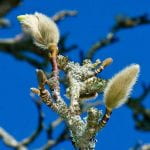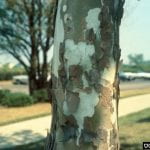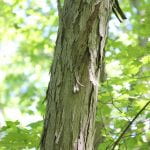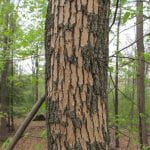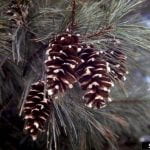Look All Around!
The ground might be covered with snow, but nature has much to offer if you just take time to look around.
Now that you are not distracted by their foliage take a look at some of the trees that have lost their leaves. These seemingly bare trees are actually covered with buds just waiting for the weather to warm up so they can unfurl into leaves or flowers. Did you know that every type of tree has a unique bud? Because of this, you can use the arrangement, the shape, and the color of buds to identify trees.
Another way to identify trees in winter is by their bark. Some trees have very distinctive bark making them easy to identify like the American sycamore (Platanus occidentalis) or the shagbark hickory (Carya ovata), while other take a more trained eye like telling the difference a sugar maple (Acer saccharum) and a silver maple (Acer saccharinum).
Here is a great guide to winter tree identification using buds and bark.
Winter Tree Identification Guide – Champaign County Forest Preserves
As you look all around, you may notice that some trees are missing their bark; it has been completely stripped off by woodpeckers. This is a tell-tale sign that you have found an ash tree (Fraxinus spp.) that has been infested with emerald ash borer, an invasive beetle that has already killed millions of ash trees in North America. The adult beetles lay thier eggs on the outside of bark and when the eggs hatch, the larvae bore into the bark and start to feed on the inner bark known as the phloem. The phloem is responsible for transporting sugars around the tree. Sugars are produced in the leaves by photosynthesis and then the phloem transports the sugars to the rest of the tree. As the larvae feed, they destroy the phloem preventing the tree from feeding itself and eventually causing the tree to die. Emerald ash borer larvae are a delicious treat for woodpeckers and their constant pecking at ash trees to get at theses scrumptious morsels causes the bark to fall off.
Trees like the eastern white pine (Pinus strobus) and the eastern hemlock (Tsuga canadensis) may be a little easier to identify in the winter as they are evergreens. White pine is covered with clusters of five feathery light green needles on flexible twigs. You may also find their long, narrow cones near by, a tasty treats for squirrels and birds. The eastern hemlock does not have bundles of needles like the white pine, but instead has soft, short, singular needles coming of the branches. The needles are dark green and have two white racing stripes on the underside. This tree also has cones, but there are quite small and almost ball-like.
So next time you step outside or go for a walk around your neighborhood, don’t forget to open your eyes and look all around. Take a moment and see if you can identify some of the trees you find. |
